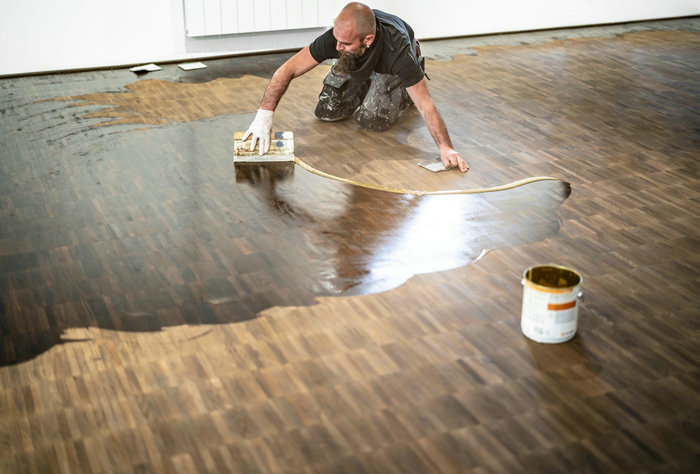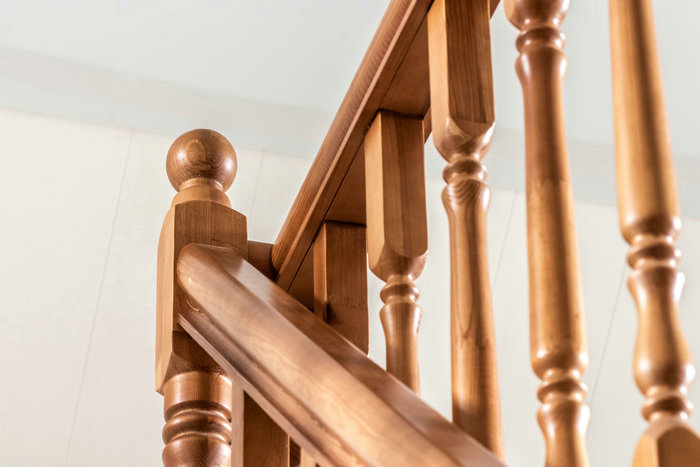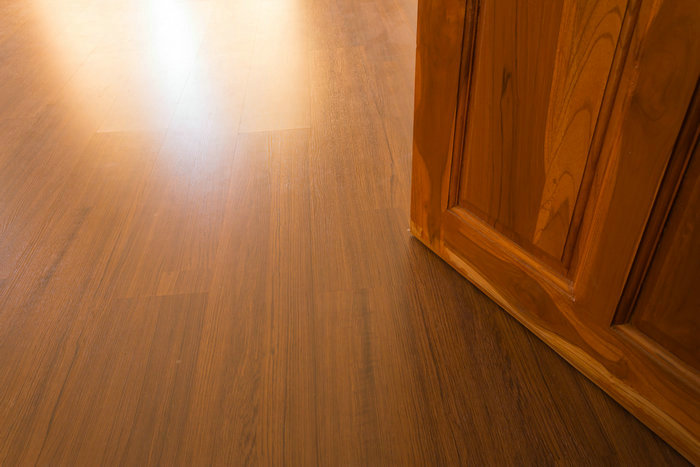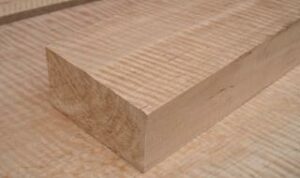Introduction
Wood finishes play a crucial role in enhancing the natural beauty of wood while providing essential protection and durability to the wooden surfaces. They come in a wide variety of choices, depending on the desired appearance, use, and level of protection.
In this article, we will delve into the world of wood finishes, exploring key considerations and the different types available to help you make an informed decision for your woodworking projects.
Purpose and Importance of Wood Finishes
Applying a wood finish to your project can offer several benefits. Firstly, it helps maintain the natural appearance of the wood, bringing out unique grain patterns and colors. You’ll notice that applying an appropriate finish can transform a dull piece of wood into a beautiful, eye-catching masterpiece.
Wood finishes also contribute to the durability of your wood projects. A well-applied finish creates a barrier from daily wear and tear, reducing the chance of scratches and other minor damages. Plus, it adds protection against moisture and insects, extending the lifespan of the wood.
Finally, a good wood finish offers essential protection. Exposure to sunlight, water, and other environmental factors can cause the wood to warp, crack, or age prematurely. By applying a suitable finish, you’re providing a layer of defense against these elements, helping preserve the wood’s integrity and ensuring your project looks its best for years.

Key Considerations Before Choosing a Wood Finish
Type of Wood
Before choosing a wood finish, it’s essential to consider the type of wood you’re working with. Different woods have different characteristics, such as natural color, grain pattern, and hardness. The finish you choose can highlight these features or change their appearance.
Desired Durability and Resistance
Consider the level of durability and resistance you need for your project. Some wood finishes provide strong protection against wear and tear, while others offer a more natural look with less protection. You may need a tougher finish if your project is exposed to high traffic or harsh conditions.
Ease of Application
Think about how easy the wood finish is to apply. Some finishes require multiple coats, sanding between applications, or special tools and techniques. If you need more time, choose a finish that can be easily applied with minimal fuss.
Budget Constraints
Keep your budget in mind when selecting a wood finish. Some finishes cost significantly more than others. Compare prices, but remember that quality and durability should also factor into your decision.
Skill Level or Expertise
Evaluate your skill level and expertise with wood finishing. If you’re a beginner, opt for a more user-friendly product that makes it easy to achieve successful results. More experienced woodworkers might consider more complex finishes for customization and fine-tuning.
Drying Time Considerations
Remember to consider the drying time of the wood finish. If you need your project to be ready quickly, look for a fast-drying finish. However, some finishes that dry quickly may be more prone to errors during the application, like streaks or uneven coverage.
Environmental and Health Impacts
Take environmental and health impacts into consideration when selecting a wood finish. Some finishes release harmful fumes or contain chemicals that may harm the environment. Look for low-VOC (volatile organic compounds) finishes that are eco-friendly and safe to use indoors.
Exposure Conditions (Humidity, Sunlight)
Ensure the wood finish you choose is appropriate for your project’s exposure conditions. If it is exposed to high humidity or direct sunlight, select a finish to resist moisture, UV rays, and other environmental factors.
Desired Appearance or Aesthetics
Lastly, consider your desired appearance or aesthetic for the finished project. Wood finishes can change the wood surface’s color, sheen, and texture. Consider the look you want to achieve and choose a finish that matches or enhances that vision.
Wood Finish Types
Penetrating Finishes
Penetrating finishes are popular because they provide a natural look to your wood while offering protection. They soak into the wood fibers, hardening and strengthening the wood from within. Some common penetrating finishes are:
- Tung Oil
- Linseed Oil
- Danish Oil
- Cedar Oil
Tung Oil
Tung oil is a natural, non-toxic oil derived from the nuts of the Tung tree. It provides a durable, water-resistant finish to your wood. To apply Tung oil, mix it a solvent (like mineral spirits) and rub it into the wood.
This oil dries slowly, so give it a few days to cure. Tung oil enhances the natural color of the wood without adding much sheen.
Linseed Oil
Linseed oil is another natural oil made from flaxseeds. It soaks into the wood and oxidizes, creating a protective film on the surface. To apply, rub the linseed oil onto the wood and wait for it to dry – usually within 24 hours. Linseed oil imparts a warm, amber hue to the wood but doesn’t offer as much water resistance as Tung oil.
Danish Oil
Danish oil is a blend of oils, varnishes, and solvents penetrating and hardening the wood. This finish is easy to apply – wipe it onto the wood and let it dry.
Danish oil is versatile, lending itself well to both small projects and large furniture pieces. It brings out the natural beauty of the wood grain and offers a low sheen.
Cedar Oil
Cedar oil, as the name suggests, is derived from cedar trees. It is a natural insect repellent and offers a slight warmth to the wood’s appearance.
To apply, rub the oil into the wood and allow sufficient time to dry. While cedar oil is especially suitable for cedar wood, it can also be used on other types of wood.

Surface Finishes
Shellac
Shellac is a natural resin mixed with alcohol to create a clear or colored finish for your wood projects. It dries quickly and provides good protection against moisture.
Lacquer
Lacquer finishes are created from cellulose resins dissolved in a volatile solvent, typically nitrocellulose. Lacquer is often used on furniture, doors, and hardwood floors.
Varnish
Varnish is a popular surface finish made from oils and resins, designed to protect and enhance the appearance of your wood. It comes in various sheens – matte, satin, semi-gloss, and high-gloss.
Wax
Waxes are soft and easy-to-apply wood finishes that provide a natural appearance and low sheen. They are often used as a topcoat on previously stained or sealed surfaces, adding extra protection and enhancing the depth of the wood grain.
Wax finishes are suitable for low-traffic surfaces, like furniture and decorative items. Application is simple – rub on with a soft cloth and buff the desired sheen. Remember that wax may require occasional reapplication to maintain the look and protection.
Polyurethane
Polyurethane is a synthetic finish that offers long-lasting protection for your wood projects. It’s available in oil-based and water-based versions and a range of sheens. Polyurethane is known for its durability and scratch resistance.
Dye
Wood dyes are water-based or solvent-based mixtures that offer vibrant color choices, helping to highlight and accentuate the wood grain. They penetrate the wood’s pores, creating a uniform color.
Stain
Stains are oil-based, or water-based wood finishes that impart color while allowing the wood grain texture to remain visible. You can achieve this with a cloth or brush, typically requiring a clear protective topcoat.
French Polish
French polishing is a traditional technique that involves applying multiple layers of shellac to create a high-gloss finish. This method builds the finish layer by layer, producing a smooth shiny surface.
Water-Based Finish
Environmentally friendly and easy to clean up, water-based finishes are becoming increasingly popular. They offer similar protection to oil-based finishes but without a strong smell.
Paint
Paint offers an utterly opaque finish, hiding the wood grain while providing color and protection. Available in various colors, paint can be applied with a brush, roller, or spray equipment.

The Wood Finishing Process
Removing Existing Finish
Before starting the wood finishing process, removing any existing finish on your furniture or other wood projects is important. This can be done using sandpaper or chemicals, depending on the type of finish you’re removing. Be sure to work in a well-ventilated area and wear appropriate safety gear.
Techniques
Sanding
Sanding is a crucial step in preparing wood for a new finish. It would help to start with coarser grit sandpaper, like 80- or 100-grit, and gradually work up to finer grits, such as 220-grit. This will help to create a smooth surface for the new finish to adhere to.
Using Chemicals
Chemical strippers can be an effective way to remove existing finishes, especially for intricate or antique pieces. Apply the chemical stripper per the manufacturer’s instructions, and remove the softened finish with a scraper or a stiff brush.
Applying Solvents
For some finishes, specifically oil-based ones, solvents such as mineral spirits or lacquer thinner can help break down and remove the finish.
Applying a New Finish
After you’ve prepped the wood, choose the right wood finish for your project. Some popular options include oil-based finishes like Tung or boiled linseed oil, water-based stains, lacquers, and varnishes.
Techniques
Sanding
Sanding between coats of finish is essential for achieving a smooth, even application. Use fine-grit sandpaper (usually around 320-grit) for sanding the surface lightly, removing any dust nibs or imperfections. Wipe the surface clean with a tack cloth before applying the next coat.
Staining
Stains come in various colors and can enhance the wood’s natural beauty while protecting it from moisture and other sources of damage. You should apply the stain with a brush or cloth, following the direction of the wood grain.
Finishing
Finishing involves applying a protective coat, such as polyurethane, varnish, or lacquer, to the wood. These coatings come in various sheens, from matte to high-gloss. Apply the finish using a brush, roller, or spray equipment, and allow it to dry according to the manufacturer’s instructions.
Distinguishing Between Wood Stain and Wood Finish
Wood Stain
Wood stain is used to color the wood, enhancing its natural grain and appearance. It can be oil-based, water-based, or gel-based.
Wood Finish
This is a protective coating applied after staining to seal the wood surface, preventing damage from moisture, dirt, and other environmental factors.
The Differences, Purposes, and Applications
Wood stains are used to change the color of the wood while allowing its natural grain to show through. They can also help to even out the appearance of different wood species, such as maple and oak.
Stains can come in transparent, semi-transparent, or solid varieties and are available in various shades and colors.
On the other hand, wood finishes are clear coatings that protect the wood from damage, such as scratches and moisture exposure. They come in various sheens and levels of durability, with options ranging from delicate shellac to hard-wearing urethane.
Choose a finish that best suits your project’s needs and the environment in which it will be used.

Identifying Different Wood Finishes on Furniture
Tips and Techniques
When it comes to furniture, many wood finishes are available, which can significantly impact your precious pieces’ appearance, durability, and maintenance requirements. Here are some tips and techniques for identifying these finishes.
Oil-based Finishes
These often include Tung, linseed, teak, and Danish oil. They provide penetrating finishes known for emphasizing the natural appearance of the wood and providing a low-gloss sheen.
To determine if you have an oil finish, dampen a cloth with mineral spirits and rub it on an inconspicuous furniture area. If the finish remains unchanged, it is likely an oil finish.
Waxes
Waxes such as paste wax, are used as a topcoat over other finishes or applied directly to the wood for a simple, natural appearance. Beeswax and carnauba waxes are commonly used, providing satin sheen and water resistance. Rub a cloth with mineral spirits on a hidden area to test for a wax finish. If the surface becomes dull, it may be a wax finish.
Varnishes
Varnishes including polyurethane and urethane finishes, are famous for their durability and resistance to water, heat, and solvents. They can be found in various sheens, from satin to high-gloss. To check for a varnish finish, use a cotton swab dipped in alcohol and carefully apply it to a hidden spot. If the finish softens, it’s a varnish.
Shellac
Shellac wood finishes are made from a natural resin secreted by the lac bug and dissolved in alcohol. They dry quickly and provide a warm, amber tone to the wood.
Lacquer
These wood finishes provide a durable, high-gloss appearance and are often used on commercially-produced furniture. To test for a lacquer finish, use a cotton swab dipped in lacquer thinner and dab it on an inconspicuous spot. If the finish becomes tacky, it’s likely lacquer.
Wood stains and dyes alter the wood’s color and appearance but do not provide additional protection. They can be oil-based, water-based, or alcohol-soluble.
Always test any solvents or chemicals in an inconspicuous area to avoid damaging your furniture. By understanding these different wood finishes, you can better care for, maintain, and appreciate your furniture and enjoy its beauty for years.

Practical Tips for Applying Wood Finishes
Essential Supplies for Wood Finishing
Before starting your wood finish project, you must gather the right materials. Here’s a list of essential supplies:
- Sandpaper: Ensure you have different grits, ranging from 100 to 220, for smoothing the wood surface.
- Wood Stains: Choose water-based or oil-based stains, depending on the desired appearance. Experiment with different colors and shades to find the best match for your furniture.
- Topcoat: Select durable topcoats, such as polyurethane, varnish, or lacquer, to provide protection and a long-lasting finish.
- Brushes: Invest in quality brushes and rollers, such as synthetic brushes, which are excellent for applying various finishes like lacquer and shellac.
- Safety Gear: Protect yourself with gloves, face masks, and safety glasses when using solvents and chemicals.
- Solvents and Cleaners: Stock on mineral spirits, alcohol, and lacquer thinner to clean and maintain your brushes and equipment.
Tips for Effective Brush Use
Here are some application tips to help you achieve a smooth and even finish:
- Always use the appropriate brush or roller for the finish you’re applying. For instance, use a synthetic brush for water-based stains and a bristle brush for oil-based stains.
- Before dipping the brush directly into the finish, gently tap it on the edge of the container to remove excess material.
- Apply the finish in thin, even coats, and work with the grain of the wood rather than against it.
- Allow each coat to dry completely before applying another one. Consult the manufacturer’s instructions for drying times and appropriate recoating windows.
- After completing your project, clean your brushes with the appropriate solvent to prolong their lifespan.
- Emphasis on Safety Precautions- It’s crucial to prioritize safety while working with wood finishes. Keep these precautions in mind:
- Ventilate your workspace well, as many finishes and solvents emit fumes that may be harmful if inhaled in large quantities.
- Wear gloves and safety glasses to protect your skin and eyes from chemicals, solvents, and stains.
- Store solvents, stains, and other chemicals in their original containers, and keep them away from open flames or heat sources.
- Dispose of used rags, brushes, and other materials responsibly, as they may pose a fire hazard if left unattended.
Strategies for Achieving Better Results
Follow these tips to obtain professional-looking results with your wood finishes:
- Before staining, test the color on scrap wood or a hidden project area to ensure it meets your expectations.
- Apply a pre-stain wood conditioner to woods like poplar or birch that often absorb stains unevenly. This step will help prevent streaks or blotches.
- Sand the surface evenly and in stages, starting with coarse sandpaper and working to finer grits.
- If using an oil finish, such as Tung or Danish oil, consider applying it in multiple coats, allowing each coat to penetrate the wood before wiping off any excess.
- Protect your finished piece by adding a topcoat or wax, like paste wax or teak oil, for added durability and shine.
- Remember- patience, practice, and the right tools will help you achieve a beautiful, well-protected wood finish.

Frequently Asked Questions (FAQs)
1. What are the different types of wood finishes?
There are several types of wood finishes you can choose from, such as:
- Varnishes
- Lacquers
- Stains
- Oils
- Waxes
2. How do I choose the right finish for my project?
When selecting a finish, consider the following:
- Desired look: Do you want to highlight the wood grain or alter the wood’s color?
- Durability: Will the finished piece be subjected to moisture, heat, or heavy wear?
- Ease of application: Ensure your chosen finish is manageable and requires no difficult cleanup.
3. What is the difference between oil-based and water-based finishes?
Oil-based finishes are more durable and resistant, enhances wood’s appearance, have longer drying time and stronger odor. While the water-based finishes are less durable, provides clear, have a faster drying time, gives a non-yellowing finish, and milder odor.
4. How do I apply wood finish?
To apply a wood finish, follow these steps:
Prepare the wooden surface. Then apply the finish using a brush or a cloth, following the direction of the wood grain.
Depending on the type of finish, let it dry for the recommended time on the product label.
Then gently sand the surface to achieve the desired coverage and protection.
5. How often should I refinish my wooden furniture?
Refinishing frequency depends on the type of finish and usage.

Order Wood Finishing Products in Bulk
Using the best wood finishing products always guarantees excellent results. That is why we invite you to buy from us today. Please send us your bulk orders via the customer contact form on our product page.






